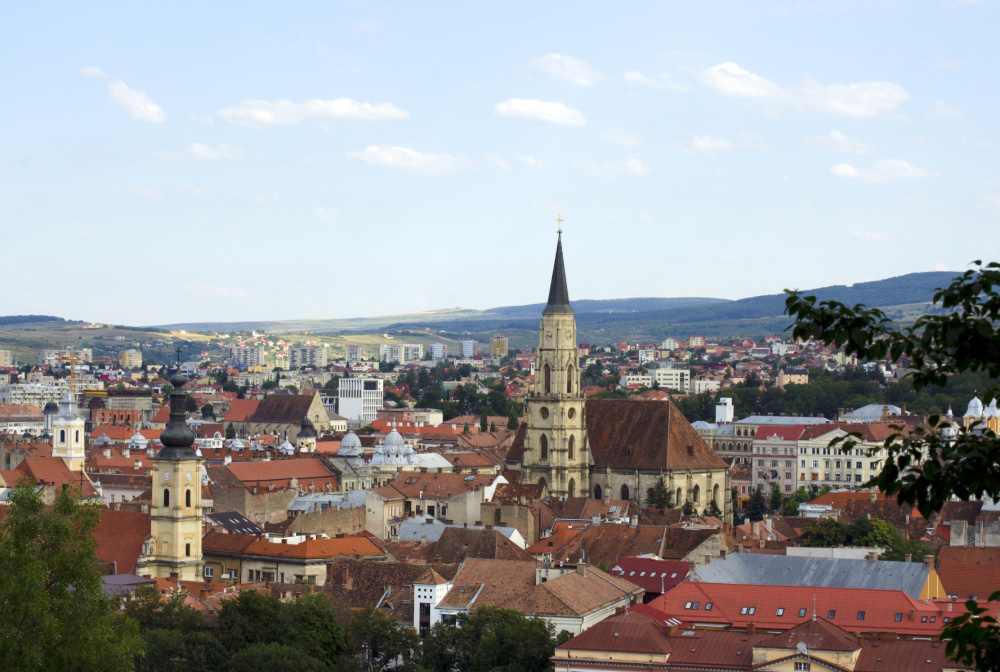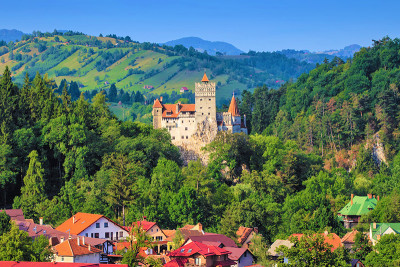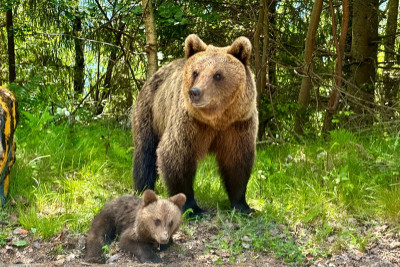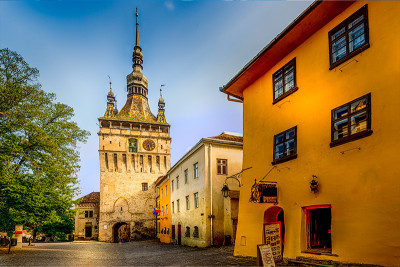Cluj-Napoca, or just Cluj for short, is Romania’s second largest city, second only to the capital of Bucharest. The city has a little bit of everything that represents Romania. It is definitely not the oldest city or the city with the most history, but it does have fortified churches and medieval buildings. It is also close to famous salt mines, a haunted forest, and is a great location if you want to travel to other famous sites in Transylvania. Cluj is also a university town, bringing plenty of vibrant life and energy to the city. Below, we will list some of the must-see places in Cluj-Napoca.
The Hungarian State Theatre And Opera
The river known as Canalul Somesul Mic crosses through Cluj-Napoca, and right along the river is the Hungarian State Theatre and Opera. It is in the perfect location to be able to catch dinner and show, and go out for drinks after if your heart desires! This specific opera house was built in 1910, although the Hungarian State Theatre goes all the way back to 1792. Tickets run about $9 USD/adult and you must purchase in advance. If you do not speak Romanian, many shows offer English subtitles, you will just have to make sure you select a show that offers this. If you are looking for another option, you can also check out the National Theatre Lucain Blaga, which is just a mile away –though the other theater does not have the beautiful view along the river!
The Central Park And The Central Market
Both of these are located along the river, not far from the Hungarian State Theatre, and they are just 600m from each other (about 0.3 miles). The Central Market is located behind the commercial complex, Mihai Viteazul. This is where many locals do their grocery shopping, mostly for produce and local dairy products. This is the biggest market in the city, so this is your best option if you want a large variety of items. But note that many of these vendors do not speak English, so brush up on your Romanian, be ready to speak with your hands, or download a language app! If your Romanian is rusty (or nonexistent), you might want to relax in Central Park after the stress of trying to communicate in a foreign language. The park was founded in the 1800s and has a manmade lake, trails, and a large pavilion. You will see locals walking through, having a picnic, or relaxing reading a book.
The Main Square
This is where you will find many of the main attractions of Cluj-Napoca. It is just two blocks away from everything else mentioned on this list – the Theatre, Central Park, and the Central Market. The main square of the city contains the St. Michael’s Church, built back in the 1400s, and is one of the finest expressions of Gothic architecture in all of Romania. Also, in the square is Banffy Palace, which was built in the 1700s in baroque style. Finally, the square also has the Art Museum, which has a gorgeous display of weaponry and paintings from Romanian artists.
The Ethnographic Museum of Transylvania
If you want an even deeper understanding of medieval life in Cluj-Napoca, you can visit the Ethnographic Museum of Transylvania. This museum first opened in 1922 (so we are almost at the 100 year anniversary!) and is one of the first of its kind in Romania. It has over 50,000 items on display, portraying all walks of life throughout history in Romania. Its nickname is “The Treasure City” and this is definitely a spot where you will be able to learn a lot!
The Cetatuia Hill
If you enjoy hiking and amazing views, then this is the place for you! Even if you don’t like hiking, but do enjoy a beautiful sunset over the city, the hike to the top is not too bad at all, so you will still enjoy this! Cetatuia Hill is also known as Fortress Hill, because Cetatuia is the name of the fortress that used to be at the top of the hill (and also used to be a prison). Today, if you walk to the top, there is a restaurant where you can dine on some traditional Romanian foods!
The Hoia-Baciu Forest
If you want a site that is actually spooky, where paranormal activity has been spotted, check out the Hoia-Baciu Forest! This forest is near Cluj-Napoca and is larger than 250 hectares. It is known as Romania’s Bermuda Triangle because of all the freaky and unexplainable things that have happened there. Not only that, but the forest is rather dark and has strange-looking vegetation growing in it. Locals do not enter because they have heard too many stories. People who come out of it often have weird symptoms, from just nausea and anxiety to rashes, migraines, and burns. Share your story if you are brave enough to enter!
The Turda Salt Mine (Salina Turda)
This is a giant salt mine located in Turda, which is northwest Romania. More than just a salt mine, this is now an amusement park too, complete with a Ferris wheel, a bowling alley, rowboats and a mini golf course. This place is fun for the kids, but good for everyone because you breathe in all that healthy salt!
Cluj-Napoca is an absolutely beautiful city to visit. It is located in western Transylvania and is considered the unofficial capital of Transylvania. It is the second biggest city in Romania and is sometimes known as simply “Cluj”.It is truly the heart of the historical region of Transylvania and is one of the most exciting cities to visit in the region! More than just the regular excitement, there is so much history in this city. Archeological evidence has been found in the city that dates all the way back to the 2nd century, during the times of the Dacian people. There is definitely a lot you can learn from a trip here!

 ES
ES
 IT
IT
 DE
DE
 FR
FR


